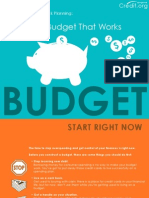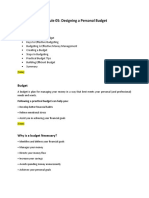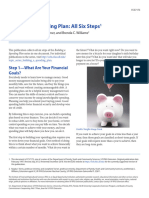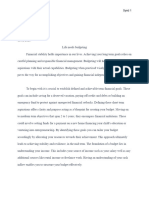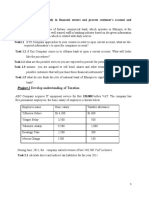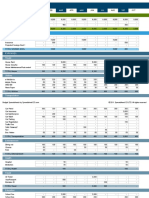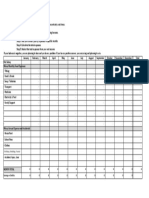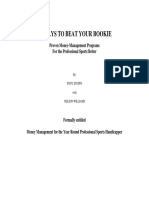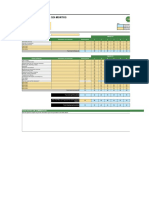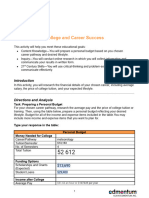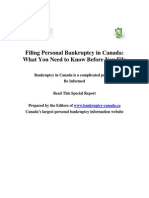Model Directive Essay ( How-To Essay )
A Step-by-Step Guide to Creating a Personal Budget
In a world of fluctuating expenses and financial uncertainty, creating a personal budget is a
crucial step toward achieving financial stability and peace of mind. A budget serves as a written
plan for how you will spend and save your money each month. This guide will walk you through
the essential steps of creating and maintaining a budget, empowering you to take control of
your finances, reduce debt, and work toward your long-term financial goals. The process
involves calculating your income, tracking your expenses, setting financial goals, and regularly
reviewing your plan.
The first step in creating a budget is to determine your total monthly income. This includes your
regular salary or wages after taxes, as well as any other consistent sources of income you may
have. It is important to work with your net income, which is your take-home pay after
deductions like taxes and insurance, to avoid overestimating what you have available to spend.
If you have an irregular income, you can estimate your monthly average by looking at your
earnings over the past year and dividing by twelve. Having a clear understanding of the money
coming in each month is the foundation upon which you will build the rest of your budget.
Once you know your income, the next step is to track your spending to understand where your
money is going. For at least a month, keep a detailed record of every expense. You can do this
using a notebook, a spreadsheet, or a budgeting app. Your expenses can be divided into two
main categories: fixed and variable. Fixed expenses are recurring costs that generally stay the
same each month, such as rent or mortgage payments, car payments, and insurance premiums.
Variable expenses are costs that can change from month to month, including groceries,
gasoline, entertainment, and dining out. Tallying up all of your expenses will give you a clear
picture of your spending habits.
With a clear understanding of your income and expenses, you can now create your budget and
set financial goals. Subtract your total monthly expenses from your total monthly income. If you
have money left over, you can allocate it toward your financial goals, such as building an
emergency fund, paying off debt, or saving for a large purchase. If you find that you are
spending more than you earn, you will need to identify areas where you can cut back on your
variable expenses. Consider using a budgeting strategy like the 50/30/20 rule, where 50% of
your income goes to needs, 30% to wants, and 20% to savings and debt repayment. Finally, it is
crucial to review your budget regularly and make adjustments as your income or expenses
change. This ongoing process will help you stay on track and ensure your financial plan
continues to work for you.















